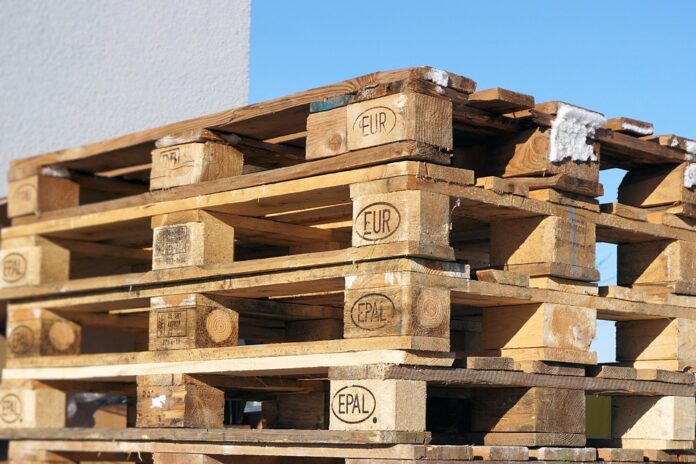Introduction
Robotic palletizing has become increasingly popular in the manufacturing industry as companies seek to automate processes to improve efficiency and reduce costs. In this report, we will analyze the return on investment (ROI) of robotic palletizing compared to manual labor costs, focusing on the financial implications for businesses.
Benefits of Robotic Palletizing
Robotic palletizing offers several advantages over manual labor, including increased productivity, reduced labor costs, improved safety, and consistent performance. Robots can work around the clock without breaks, leading to higher throughput and faster production times. Additionally, robots can handle heavy loads with ease, reducing the risk of injuries to workers.
Increased Productivity
One of the key benefits of robotic palletizing is the significant increase in productivity. Robots can work much faster than humans, leading to higher output and faster turnaround times. This increased productivity can result in higher revenue for businesses as they are able to fulfill orders more quickly.
Reduced Labor Costs
Another major advantage of robotic palletizing is the reduction in labor costs. While the initial investment in robots may be high, they can ultimately save businesses money in the long run by eliminating the need for manual labor. Robots do not require salaries, benefits, or breaks, making them a cost-effective alternative to human workers.
Improved Safety
Robotic palletizing also improves workplace safety by reducing the risk of injuries to workers. Robots can handle heavy loads and repetitive tasks without getting tired or making mistakes, minimizing the chance of accidents on the production floor. This can help companies reduce worker compensation claims and improve overall employee satisfaction.
Consistent Performance
Unlike human workers who may vary in their performance, robots offer consistent and reliable performance. They can palletize products with precision and accuracy every time, ensuring that orders are fulfilled correctly and efficiently. This consistency can help businesses maintain high quality standards and customer satisfaction levels.
ROI Analysis
To determine the ROI of robotic palletizing versus manual labor costs, we need to consider the initial investment in robots, ongoing maintenance costs, labor savings, productivity gains, and other relevant factors. Let’s look at a hypothetical scenario to illustrate this analysis.
Hypothetical Scenario
ABC Manufacturing Company is considering investing in robotic palletizing equipment to automate their palletizing process. The cost of a robotic palletizing system is $100,000, with an estimated annual maintenance cost of $10,000. The company currently employs three workers to palletize products, each earning an annual salary of $40,000.
Calculation of ROI
1. Initial Investment: $100,000
2. Annual Maintenance Cost: $10,000
3. Annual Labor Cost: $40,000 x 3 = $120,000
4. Total Annual Cost with Robots: $10,000 (maintenance) + $100,000 (initial investment) = $110,000
5. Total Annual Cost with Manual Labor: $120,000
6. Annual Savings with Robots: $120,000 – $110,000 = $10,000
In this scenario, ABC Manufacturing Company would save $10,000 per year by using robotic palletizing equipment instead of manual labor. This represents a positive ROI, as the company would recoup their initial investment in 10 years (assuming no increase in labor costs or other factors).
Industry Insights
The use of robotic palletizing in the manufacturing industry is on the rise, driven by the need for increased efficiency, cost savings, and improved safety. Companies across various sectors, including food and beverage, pharmaceuticals, and consumer goods, are adopting robotic palletizing technology to streamline their operations and remain competitive in the market.
Case Study: Company X
Company X, a leading food manufacturer, recently implemented robotic palletizing equipment in their production facility. By replacing manual labor with robots, Company X was able to increase their productivity by 30% and reduce labor costs by 20%. This resulted in significant savings for the company and improved overall efficiency in their palletizing process.
Trends in Robotic Palletizing
As technology continues to advance, robotic palletizing systems are becoming more sophisticated and versatile. Companies can now choose from a wide range of robotic solutions that are tailored to their specific needs and production requirements. This customization allows businesses to maximize the benefits of robotic palletizing and achieve a higher ROI.
Future Outlook
Looking ahead, the adoption of robotic palletizing is expected to continue growing as companies seek innovative solutions to enhance their operations. With advancements in artificial intelligence, machine learning, and automation, robots are becoming increasingly intelligent and capable of handling complex tasks. This will further drive the ROI of robotic palletizing and solidify its role as a key technology in the manufacturing industry.
In conclusion, robotic palletizing offers significant cost savings, improved productivity, and enhanced safety for businesses in the manufacturing industry. By carefully analyzing the ROI of robotic palletizing versus manual labor costs, companies can make informed decisions about investing in this technology to drive efficiency and competitiveness in their operations.




